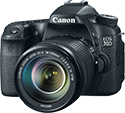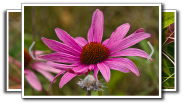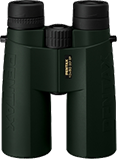bronze birch borer
(Agrilus anxius)
Conservation • Description • Habitat • Ecology • Distribution • Taxonomy
|
|
||||||||||||||
Description |
Bronze birch borer is a common, native, small to medium size, metallic wood boring beetle. It occurs across the northern United States and southern Canada. Bronze birch borer is considered a secondary pest of birch trees. It attacks trees that have injury to the stem or roots, or are weakened or stressed by drought, old age, insect defoliation, or soil compaction. It occasionally also attacks healthy trees. It is a serious economic pest in Missouri, where there have been extensive plantings of non-native silver birch, a European species. However, bronze birch borer is native, and as such it is considered a normal component of any ecosystem dominated by birch. Adults are active in Minnesota from late May to August. They are found in deciduous forests and woodlands, in parks, and in urban and residential areas, anywhere birch trees are found. They feed on the leaves of birch (Betula spp.) and poplar (Populus spp.) trees. The larvae feed on the inner bark (cambium), creating serpentine tunnels (galleries) that interrupt the flow of food. They eventually girdle and kill the branch or tree. In Minnesota, they attack paper birch and yellow birch, but they are not known to attach river birch. They have been reported attacking quaking aspen, eastern cottonwood, and bigtooth aspen, all in the genus Populus, but these reports are likely misidentifications of the similar looking granulate poplar borer. Adults are 3⁄16″ to 9⁄16″ (5 to 13 mm) in length. Males are smaller than females. The body is somewhat bullet-shaped, rigid, narrow, elongate, and slightly flattened. It is black with metallic bronze reflections. The amount of metallic reflection varies with the angle and strength of the light, so that the overall color can change as the observer shifts positions. The head is black with bronze reflections. It is flat and it is slightly tucked beneath the first segment of the thorax (prothorax). The eyes are kidney shaped. The antennae are short and have 11 segments. Segments 1 through 3 are cylindrical. Segments 4 through 11 are sawtoothed. The mouthparts are projected downward. On the male the upper part of the face (frons) has green reflections. On the female the frons has copper bronze reflections. The upper plate covering the prothorax (pronotum) is wider than long. It is black with bronze reflections. There is a distinct ridge on each side of the pronotum at the shoulder region (prehumeral carina) near the base of the elytron. The wing covers (elytra) are colored similar to the pronotum but are usually darker. They are slightly narrowed before the middle and tapered beyond the middle toward the tips. The tips are separated, broadly rounded, and finely toothed. Toward the tip the inner margins are slightly elevated. On the male, the fourth segment (tibia) on the front and middle legs has a tooth at the tip. |
Size |
Total length: 3⁄16″ to 9⁄16″ (5 to 13 mm) |
Similar Species |
Habitat |
Deciduous forests and woodlands, parks, urban and residential areas |
Ecology |
Season |
Late May to August |
Behavior |
|
Life Cycle |
|
Larva Hosts |
Paper birch and yellow birch |
Adult Food |
Leaves of birch (Betula spp.) and poplar (Populus spp.) trees |
Distribution |
||
|
Sources The counties in light green have only records prior to 1980. Biodiversity occurrence data published by: Minnesota Biodiversity Atlas (accessed through the Minnesota Biodiversity Atlas Portal, bellatlas.umn.edu, 6/5/2025). Hallinen, Marie J; Steffens, Wayne P; Schultz, Jennifer L; Wittman, Jacob T; Aukema, Brian H. (2021). The Jewel Beetles of Minnesota. Retrieved from the University Digital Conservancy, https://hdl.handle.net/11299/218928. |
|
| 6/5/2025 | ||
Occurrence |
||
Common |
||
Taxonomy |
|
Order |
Coleoptera (Beetles) |
Suborder |
Polyphaga (Water, Rove, Scarab, Long-horned, Leaf, and Snout Beetles) |
Infraorder |
Elateriformia |
Superfamily |
Buprestoidea |
Family |
Buprestidae (jewel beetles) |
Subfamily |
Agrilinae |
Tribe |
Agrilini |
Subtribe |
Agrilina |
Genus |
|
Subgenus |
|
Subordinate Taxa |
|
|
|
Synonyms |
|
Agrilus gravis Agrilus torpidus |
|
Common Names |
|
bronze birch borer |
|
Glossary
Cambium
A thin layer of soft growing tissue composed of unspecialized cells in the stems of plants. It provides new xylem to the inside and new phloem to the outside.
Carina
An elevated keel or ridge.
Elytra
The hardened or leathery forewings of beetles used to protect the fragile hindwings, which are used for flying. Singular: elytron.
Frons
The upper front part of an insect’s face, roughly corresponding to the forehead.
Pronotum
The exoskeletal plate on the upper side of the first segment of the thorax of an insect.
Prothorax
The first (forward) segment of the thorax on an insect, bearing the first pair of legs but not wings.
Tibia
The fourth segment of an insect leg, after the femur and before the tarsus (foot). The fifth segment of a spider leg or palp. Plural: tibiae.
visitor Photos |
||
Share your photo of this insect. |
||
This button not working for you? |
||
Alfredo Colon |
 |
MinnesotaSeasons.com Photos |
||
|
||
|
||

Slideshows |
|

visitor videos |
||
Share your video of this insect. |
||
This button not working for you? |
||
|
Other videos |
||
What is Birch Borer? |
About
Aug 20, 2018 Birch Borer What is Birch Borer? What are the symptoms of Birch Borer? How do you control Birch Borer? Chemical treatment: Lightly infested trees often return to full health with an annual preventative insecticide program. We add an 18-0-6 tree formulated Root Stimulator and micronutrients to be certain the tree stays in good health. |
Bronze Birch Borrer Damage Identification |
About
Sep 28, 2021 We talk briefly about a birch tree with borer damage, and how we identify it. |

|
Created: 6/5/2025 Last Updated: © MinnesotaSeasons.com. All rights reserved. |


